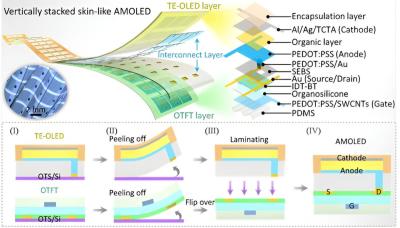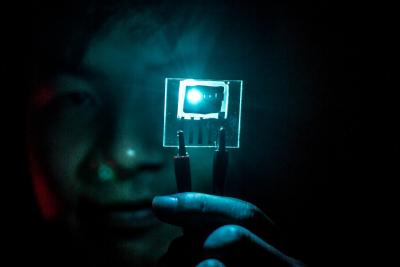Researchers achieve OLED displays boasting 84,000 PPI, with the world's smallest OLED pixels
Researchers from ETH Zürich and the Huazhong University of Science and Technology developed a new scalable fabrication technology that enables the deposition of extremely small OLED pixels. The so-called nano-OLEDs achieve a pixel density of 84,000 PPI, or even higher. The pixel size is around 100 nm, the smallest pixels ever reported.
The method is based on direct nanomolecular patterning of the OLED materials, realized by self-aligned evaporation through nanoapertures fabricated on a free-standing silicon nitride film adhering to the substrate. The researchers report that the average nano-OLED EQEs is up to 10%.









